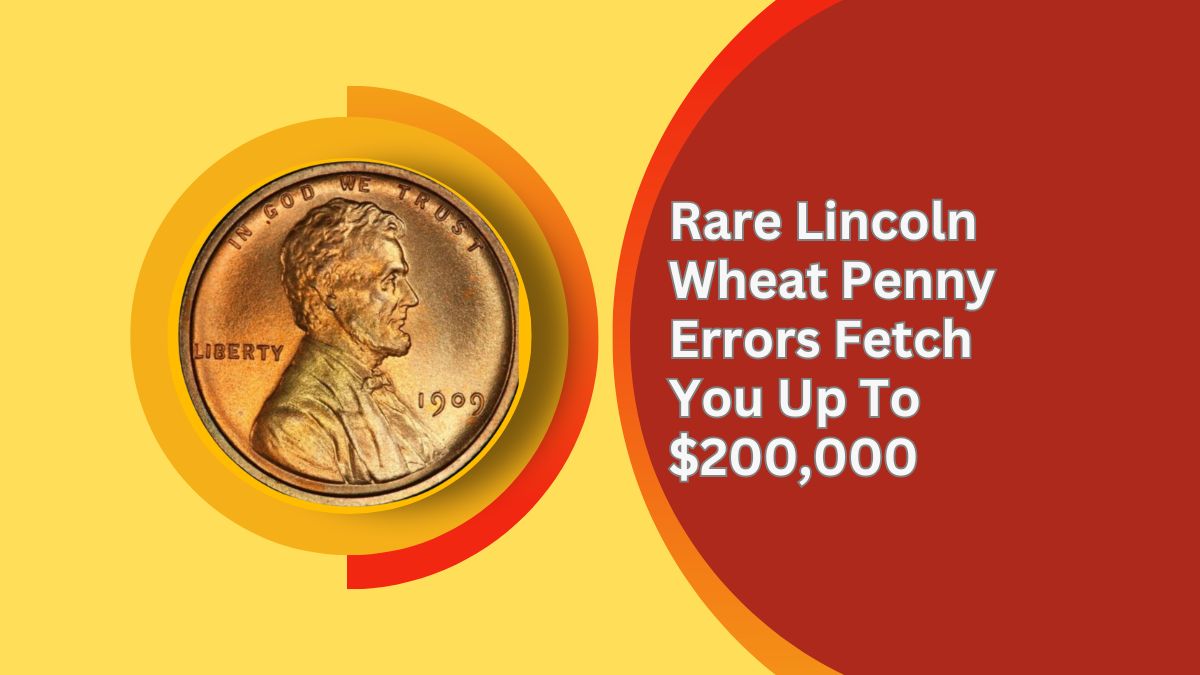The Lincoln Wheat Penny, minted from 1909 to 1958, holds a special place in American numismatics. While many of these pennies are common, certain error coins have become highly sought after by collectors, fetching impressive sums at auctions. Understanding these errors can transform an ordinary penny into a valuable treasure.
Wheat Penny Errors
Minting errors occur when anomalies arise during the coin production process, resulting in unique variations. These errors can significantly increase a coin’s value, especially when they are rare. Common types of errors include:
- Wrong Planchet Errors: Coins struck on an incorrect metal planchet.
- Doubled Die Errors: Duplication of design elements due to misalignment during striking.
- Missing Mint Marks: Absence of the mint mark that indicates where the coin was produced.
- Off-Center Strikes: Misaligned striking resulting in partial designs.
1943 Copper Wheat Penny
During World War II, the U.S. Mint shifted from copper to steel for penny production to conserve copper for the war effort. However, a few copper planchets from 1942 were mistakenly used in 1943. These rare pennies are highly valuable.
Estimated Value: $100,000 – $200,000
1944 Steel Wheat Penny
In 1944, the Mint reverted to copper pennies, but some leftover steel planchets from 1943 were accidentally used. These steel pennies from 1944 are rare and sought after by collectors.
Estimated Value: $75,000 – $110,000
1955 Doubled Die Obverse Wheat Penny
This penny features a prominent doubling effect on the obverse side, particularly noticeable on the date and inscriptions like “LIBERTY” and “IN GOD WE TRUST.” The dramatic doubling makes it one of the most famous U.S. error coins.
Estimated Value: $15,000 – $50,000
1922 No D Wheat Penny
All pennies minted in 1922 were produced at the Denver Mint and should bear a “D” mint mark. However, due to a worn die, some coins lack this mark, making them unique and valuable.
Estimated Value: $10,000 – $20,000 (for high-grade specimens)
1909-S VDB Wheat Penny (Over Horizontal S)
The 1909-S VDB penny is notable for the initials of its designer, Victor David Brenner, on the reverse side. A rare variant features the “S” mint mark punched over a horizontal “S,” adding to its uniqueness.
Estimated Value: $120 – $350
| Coin Type | Year | Error Type | Estimated Value Range | Notable Features |
|---|---|---|---|---|
| 1943 Copper Wheat Penny | 1943 | Wrong Planchet | $100,000 – $200,000 | Struck on copper instead of steel |
| 1944 Steel Wheat Penny | 1944 | Wrong Planchet | $75,000 – $110,000 | Struck on steel instead of copper |
| 1955 Doubled Die Obverse Wheat Penny | 1955 | Doubled Die | $15,000 – $50,000 | Prominent doubling on obverse |
| 1922 No D Wheat Penny | 1922 | Missing Mint Mark | $10,000 – $20,000 | Absence of “D” mint mark |
These rare error coins highlight the fascinating nuances of minting processes and the potential value hidden in everyday pocket change.
Collectors and enthusiasts continue to seek out these anomalies, underscoring the enduring allure of the Lincoln Wheat Penny.
FAQs
What makes a Wheat Penny error coin valuable?
The value of a Wheat Penny error coin is determined by the rarity and prominence of the minting error, as well as the coin’s overall condition.
How can I identify a 1955 Doubled Die Obverse Wheat Penny?
This penny displays noticeable doubling on the obverse side, especially on the date and inscriptions like “LIBERTY” and “IN GOD WE TRUST.”
Are all 1943 pennies valuable?
No, only the 1943 pennies mistakenly struck on copper planchets are highly valuable. The standard 1943 steel pennies are common and hold minimal value.
